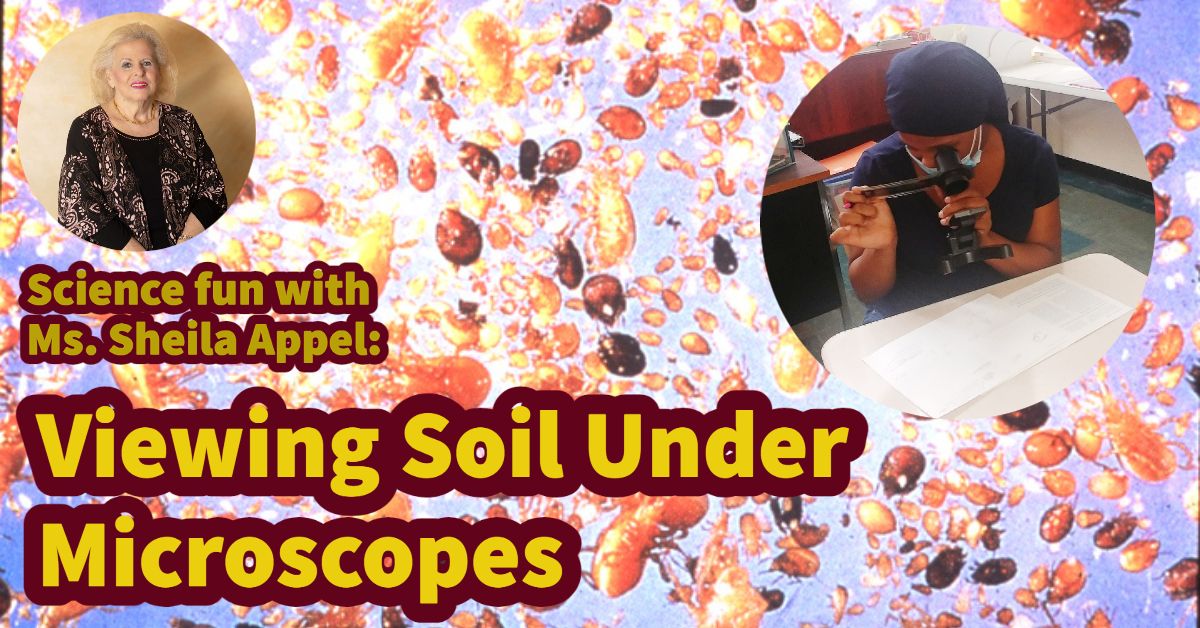Mitosis Cell Division Discovery with Ms. Appel
Ms. Appel’s S.T.E.M. class recently learned about mitosis (cell division) using the scientific method. The process started with two questions: What is mitosis and why is it important?
Rather than starting from scratch in putting together a plan for answering their questions, Ms. Appel showed her students how to be savvy scientists by using library and Internet research to help them find the best way to do things and ensure that they do not repeat mistakes from the past.
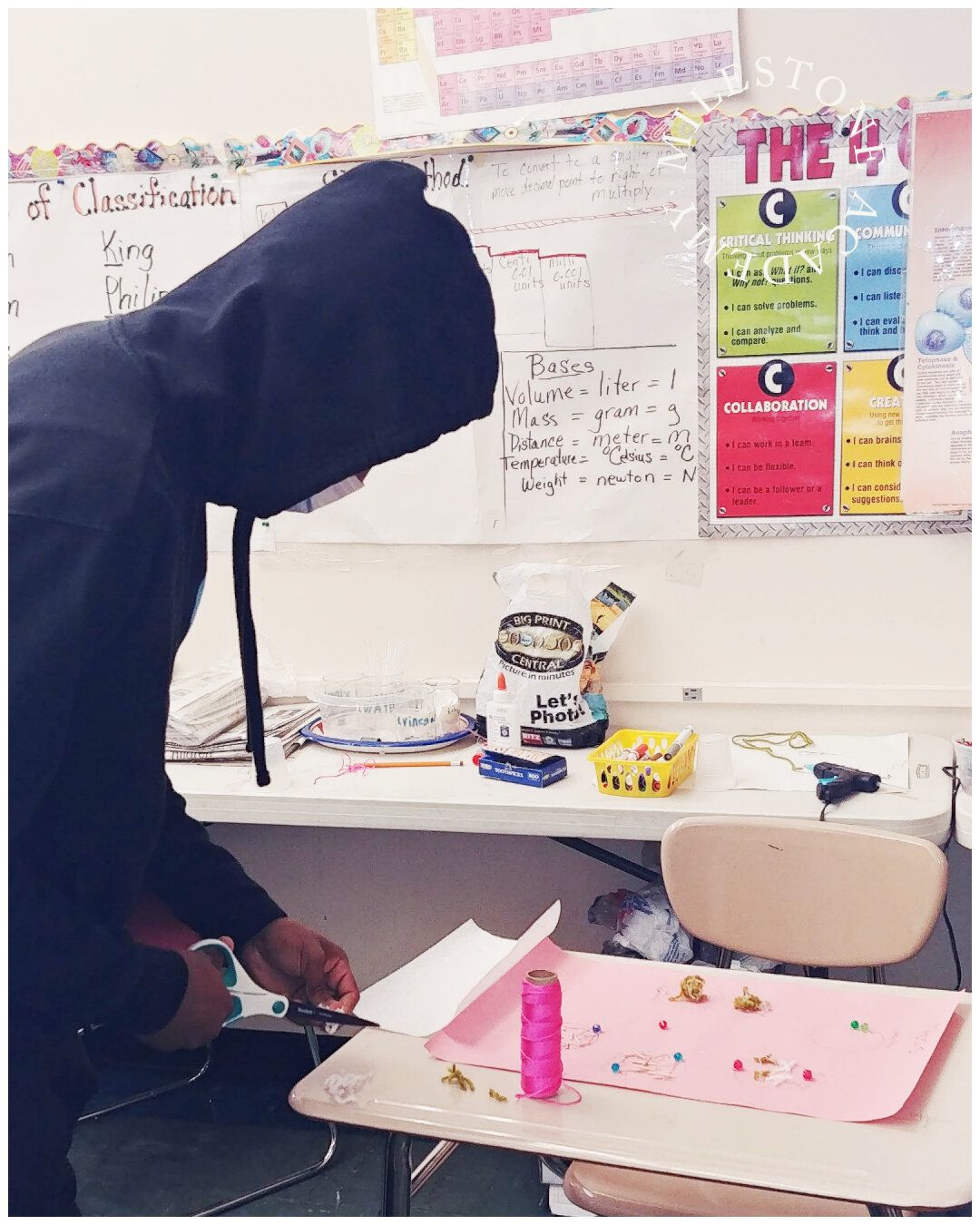
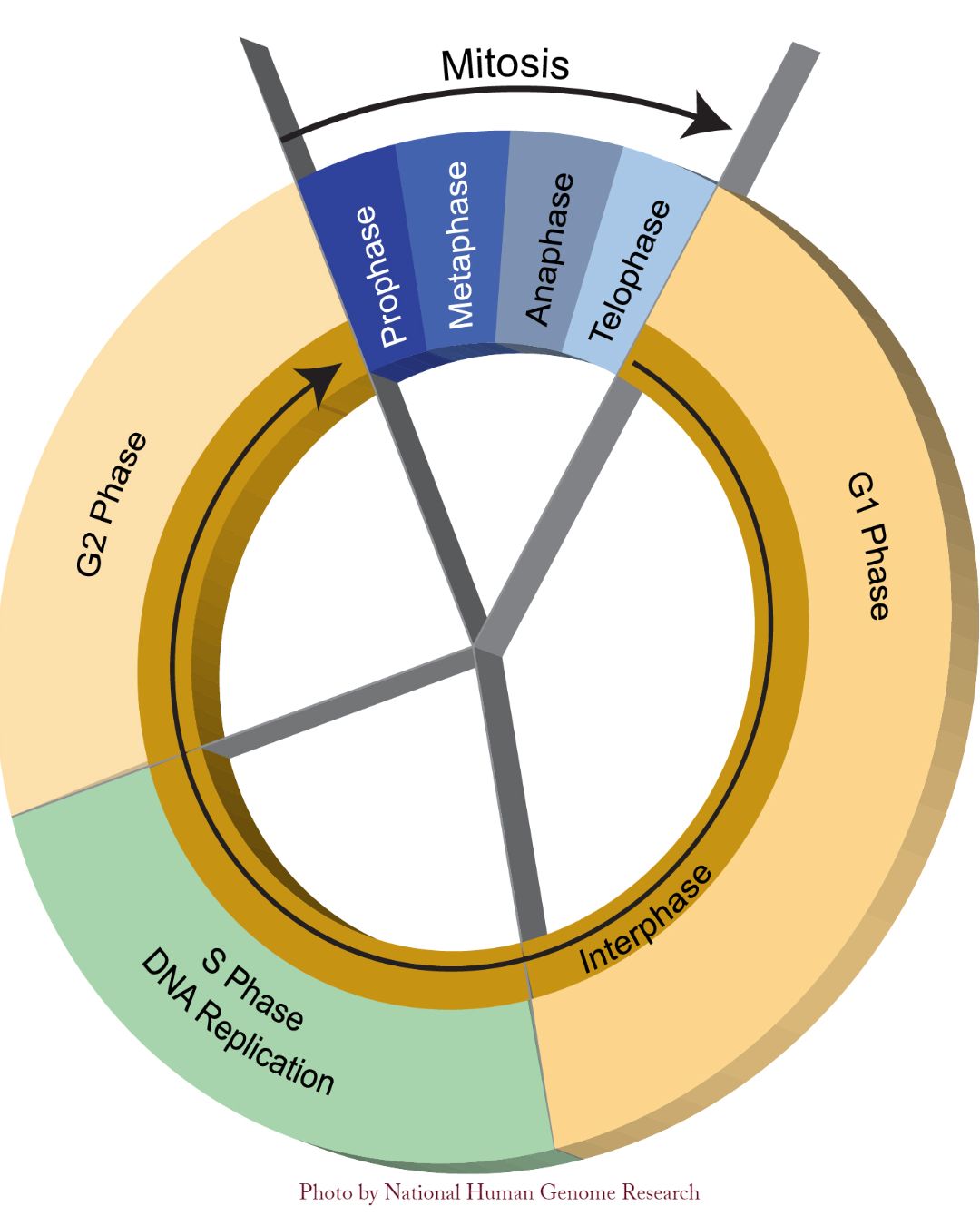

WHAT IS MITOSIS?
Mitosis is a process of cell duplication, in which one cell divides into two genetically identical daughter cells. In the various stages of mitosis, the cell’s chromosomes are copied and then distributed equally between the two new nuclei of the daughter cells.
WHAT ARE THE PHASES OF MITOSIS?
Mitosis consists of five morphologically distinct phases: prophase, prometaphase, metaphase, anaphase, and telophase. Each phase involves characteristic steps in chromosome alignment and separation. Once mitosis is complete, the entire cell divides in two by way of the process called cytokinesis (See Figure One Below).

(Figure One)
WHAT HAPPENS DURING THE PROPHASE?
Prophase is the first stage in mitosis, occurring after the conclusion of the G2 portion of the interphase. During prophase, the parent cell chromosomes — which were duplicated during the S phase — condense and become thousands of times more compact than they were during interphase. Because each duplicated chromosome consists of two identical sister chromatids joined at a point called the centromere, these structures now appear as X-shaped bodies when viewed under a microscope. Several DNA binding proteins catalyze the condensation process, including cohesin and condensin. Cohesin forms rings that hold the sister chromatids together, whereas condensin forms ring that coil the chromosomes into highly compact forms.
The mitotic spindle also begins to develop during the prophase. As the cell’s two centrosomes move toward opposite poles, microtubules gradually assemble between them, forming the network that will later pull the duplicated chromosomes apart.
WHAT HAPPENS DURING THE PROMETAPHASE?
When the prophase is complete, the cell enters prometaphase — the second stage of mitosis. During prometaphase, phosphorylation of nuclear lamins by M-CDK causes the nuclear membrane to break down into small vesicles. As a result, the spindle microtubules now have direct access to the genetic material of the cell.
Each microtubule is highly dynamic, growing outward from the centrosome and collapsing backward as it tries to find a chromosome. Eventually, the microtubules find their targets and connect to each chromosome at its kinetochore, a complex of proteins positioned at the centromere. The actual number of microtubules that attach to a kinetochore varies between species, but at least one microtubule from each pole attaches to the kinetochore of each chromosome. A tug-of-war then ensues as the chromosomes move back and forth toward the two poles.
WHAT HAPPENS DURING THE METAPHASE AND ANAPHASE?
As prometaphase ends and metaphase begins, the chromosomes align along the cell equator. Every chromosome has at least two microtubules extending from its kinetochore — with at least one microtubule connected to each pole. At this point, the tension within the cell becomes balanced, and the chromosomes no longer move back and forth. In addition, the spindle is now complete, and three groups of spindle microtubules are clear. Kinetochore microtubules attach the chromosomes to the spindle pole; interpolar microtubules extend from the spindle pole across the equator, to the opposite spindle pole; and astral microtubules extend from the spindle pole to the cell membrane.
Metaphase leads to anaphase, during which each chromosome’s sister chromatids separate and move to opposite poles of the cell. Enzymatic breakdown of cohesin — which linked the sister chromatids together during prophase — causes this separation to occur. Upon separation, every chromatid becomes an independent chromosome.
Meanwhile, changes in microtubule length supply the mechanism for chromosome movement. More specifically, in the first part of anaphase — sometimes called anaphase A — the kinetochore microtubules shorten and draw the chromosomes toward the spindle poles. Then, in the second part of anaphase — sometimes called anaphase B — the astral microtubules that are anchored to the cell membrane pull the poles further apart and the interpolar microtubules slide past each other, exerting an added pull on the chromosomes (Figure Two).
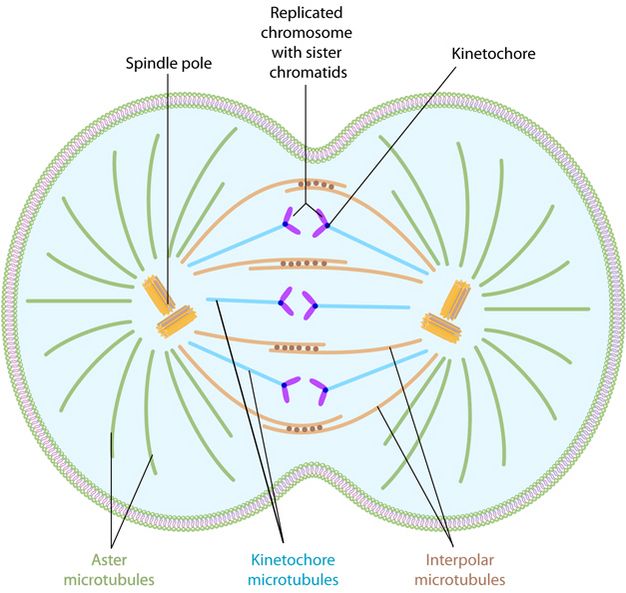
(Figure Two)
WHAT HAPPENS DURING TELOPHASE?
During telophase, the chromosomes arrive at the cell poles, the mitotic spindle disassembles, and the vesicles that have fragments of the original nuclear membrane assemble around the two sets of chromosomes. Phosphatases then dephosphorylate the lamins at each end of the cell. This dephosphorylation results in the formation of a new nuclear membrane around each group of chromosomes.
WHEN DO CELLS ACTUALLY DIVIDE?
Cytokinesis is the physical process that finally splits the parent cell into two identical daughter cells. During cytokinesis, the cell membrane pinches in at the cell equator, forming a cleft called the cleavage furrow. The position of the furrow depends on the position of the astral and interpolar microtubules during anaphase.
The cleavage furrow forms because of the action of a contractile ring of overlapping actin and myosin filaments. As the actin and myosin filaments move past each other, the contractile ring becomes smaller, akin to pulling a drawstring at the top of a purse. When the ring reaches its smallest point, the cleavage furrow completely bisects the cell at its center, resulting in two separate daughter cells of equal size (Figure Three).
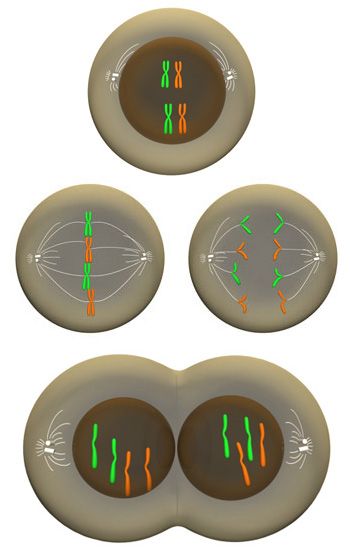
(Figure Three)
WHY IS MITOSIS IMPORTANT TO ORGANISMS?
According to the Britannica Encyclopedia, Mitosis is important to multicellular organisms because it supplies new cells for growth and for the replacement of worn-out cells, such as skin cells. Single-celled organisms rely on mitosis as their primary means of asexual reproduction.
Mitosis is very important to life because it supplies new cells for growth and for the replacement of worn-out cells. Mitosis may take minutes or hours, depending upon the kind of cells and species of organisms. It is influenced by time of day, temperature, and chemicals.
Resources:
Here are some other MileStone Academy S.T.EM. projects and updates that may interest you:
